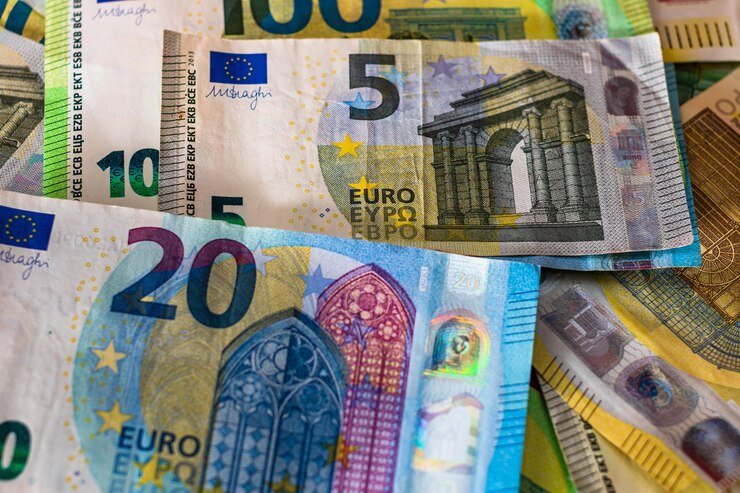Gold’s Historic Leap Above $3,000: Market Responses, Geopolitical Uncertainty, and Prospects Ahead
Gold prices leapt above the historic $3,000 level to an all-time high of $3,004 per ounce before retreating to $2,982 due to US Dollar fluctuations and uncertainty regarding President Donald Trump’s trade agenda. The price rally was propelled by geopolitical uncertainties, such as the weakening Russia-Ukraine ceasefire and China’s ongoing gold buildup, which drove demand for the safe-haven metal. At the same time, fears of US recession intensified in the wake of soft consumer sentiment readings, fueling speculation about further easing of Federal Reserve policy in 2025. Despite the retreat, technical analysts foresee another attempt to drive prices higher to test resistance levels with support at $2,950 and resistance at $3,050 and $3,100 being key. KEY LOOKOUTS • Having briefly breached $3,000, gold bounces off $3,050 while support at $2,950 is still the key to knowing what will happen next. • Russia-Ukraine ceasefire uncertainty and China’s continuing gold purchases would potentially affect bullion demand and price movements. • Subdued consumer confidence and increasing recession worries boost hopes for Federal Reserve rate reductions, affecting the long-term outlook of gold. • Trump’s tariffs on steel and aluminum can stoke inflation fears, impacting the US Dollar and pushing gold prices up as a safe-haven. Gold’s recent rally above $3,000 underscores the increasing influence of geopolitical tensions, economic uncertainty, and changing monetary policies on the demand for the precious metal. The Russia-Ukraine ceasefire is still tenuous, while China’s ongoing gold hoarding underpins bullish sentiment. At the same time, US recession concerns have grown amid weak consumer sentiment numbers, increasing expectations of possible Federal Reserve rate reductions in 2025. Also, President Trump’s steel and aluminum tariffs have fueled inflationary fears, diminishing the US Dollar and further supporting gold as a safe-haven asset. While traders closely follow future economic data and Fed moves, gold’s capacity to hold onto its all-time highs will hinge on changing market dynamics. Gold’s historical rally above $3,000 is a response to increasing geopolitical risks, economic uncertainty, and inflation threats. Negative US consumer sentiment and expectations of Fed rate cuts drive bullish pressures, while Trump’s tariffs impose stress on the US Dollar, enhancing gold’s safe-haven appeal. • Gold momentarily peaked at a new all-time high of $3,004 per ounce before receding to $2,982 due to market volatility. • Failing Russia-Ukraine truce and persistent China gold buildup stimulate safe-haven demand for bullion. • Dovish consumer sentiment information heightens prospects of economic slow-down, sparking Federal Reserve interest rate reduction anticipations for 2025. • New import tariffs on aluminum and steel set off inflation concern, drenching the US Dollar while perpetuating bull-run in gold. • Soft Greenback spurs gold prices upward, though Treasuries market yield shifts as well as expected inflation provide variability. • Gold is resisted at $3,050 and $3,100, with very strong support at $2,950, followed by $2,900 and $2,850. • Investors look forward to next week’s Federal Reserve policy meeting for additional hints at interest rates and economic forecasts. Gold’s recent record of breaching $3,000 an ounce underscores growing global demand for safe-haven assets in light of increasing geopolitical and economic uncertainty. The ongoing Russia-Ukraine conflict, despite ceasefire efforts, remains a major factor influencing investor sentiment. Meanwhile, China’s central bank continues to expand its gold reserves, signaling strong institutional demand. The combination of these geopolitical risks and global market instability has further reinforced gold’s position as a preferred store of value. Furthermore, trade tensions, specifically US President Donald Trump’s tariffs on steel and aluminum, have stoked inflation fears, rendering gold a sought-after hedge against economic uncertainty. XAU/USD Daily Price Chart Chart Source: TradingView Apart from geopolitics and trade policies, the US economy is also at the center of influencing gold’s demand. A sudden drop in consumer confidence, fueled by fears of economic slowdown, has increased speculation that the Federal Reserve could relax monetary policy in 2025. The potential for lower interest rates and a weakening US Dollar enhances gold’s attractiveness as an alternative asset. Investors are eagerly awaiting future economic releases, such as retail sales and housing market reports, for additional clues regarding the health of the US economy. While uncertainty lingers, gold continues to be the focal point of investor attention, mirroring general anxiety regarding inflation, economic stability, and worldwide financial trends. TECHNICAL ANALYSIS Gold’s technical picture indicates a phase of consolidation following a brief move above the $3,000 mark. The metal encountered resistance around $3,004 before retreating, signaling profit-taking and a temporary respite in bullish pressure. The important support is around $2,950, which if broken, can send prices lower to $2,900 and $2,850. On the other side, a consistent rally above $3,000 can put the fence open for another test of $3,050 and maybe $3,100. Traders are in wait-and-see mode regarding the Federal Reserve’s monetary policy decision, with expectations of interest rates influencing gold’s next move. FORECAST Gold’s upswing is in place as geopolitics, rising inflation expectations, and possible Federal Reserve rate reductions underpin prices higher. Gold can trigger yet another push upward to the next resistance levels at $3,050 and $3,100 if it stays above $3,000. Ongoing central bank purchases, especially from China, and weakening US Dollar may underpin additional support for the rally. Moreover, any increase in geopolitical tensions or dovishness from the Fed can fuel safe-haven demand, supporting gold’s long-term uptrend. Gold has good fundamentals but is exposed to downside risks if profit-taking becomes more aggressive or the US Dollar rallies unexpectedly. A fall below the critical support level of $2,950 can trigger a deeper correction towards $2,900 and $2,850. If economic reports, including retail sales or housing data, beat expectations, they may decrease the chances of aggressive Fed rate cuts, capping gold’s gains. Additionally, if inflation continues to be contained and risk appetite grows, investors will turn their attention to other assets or equities and temporarily put pressure on gold prices.







